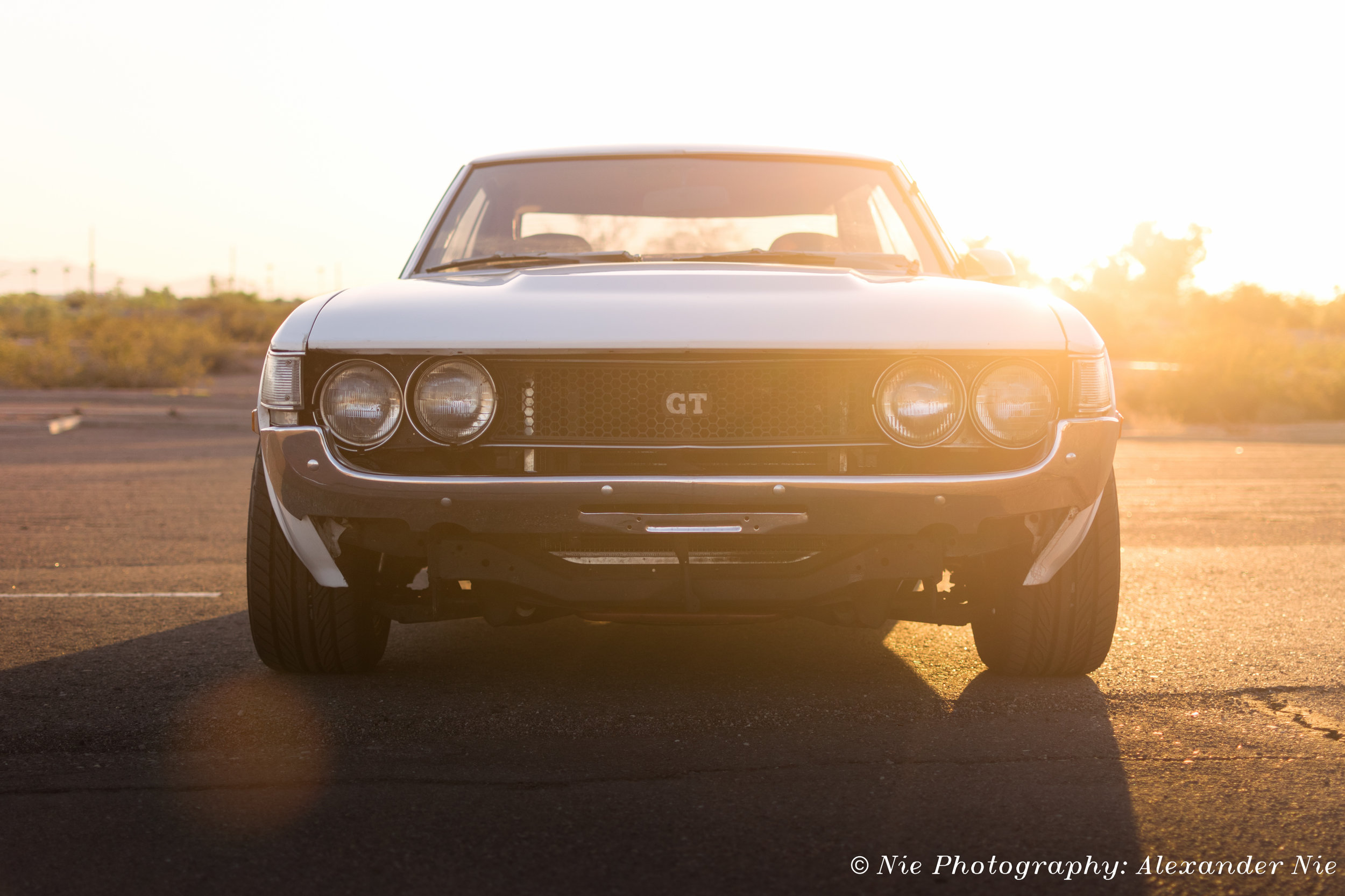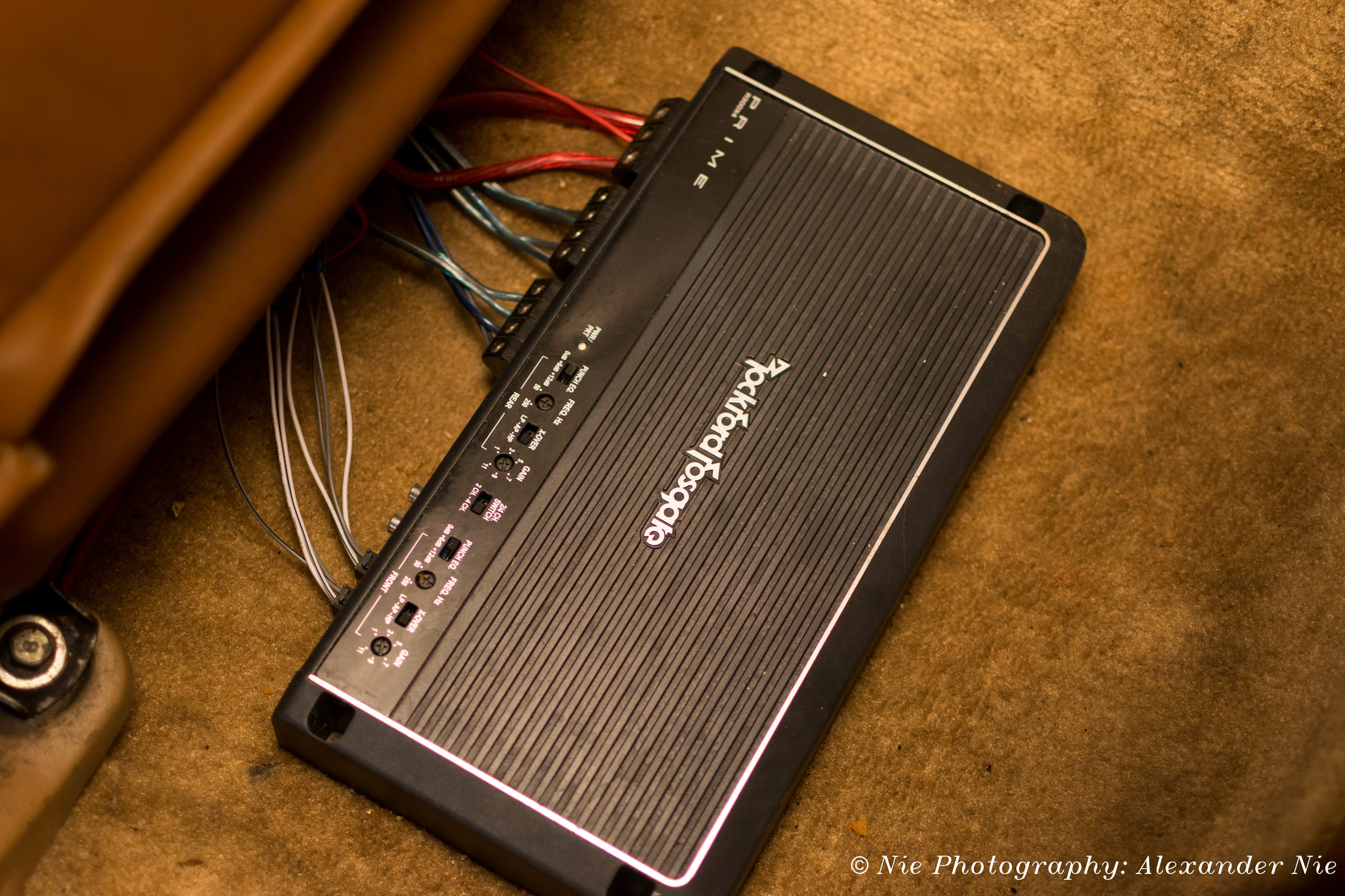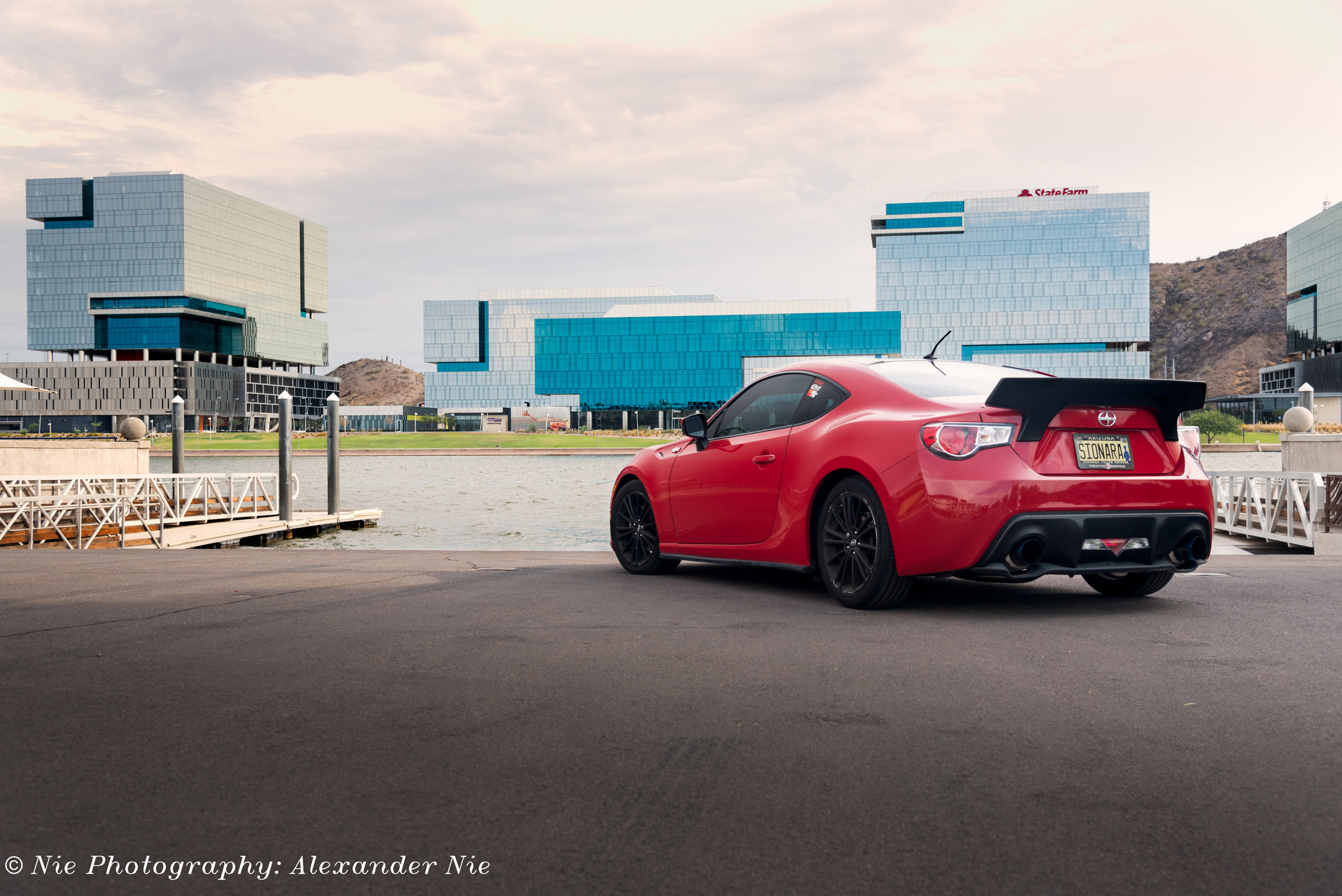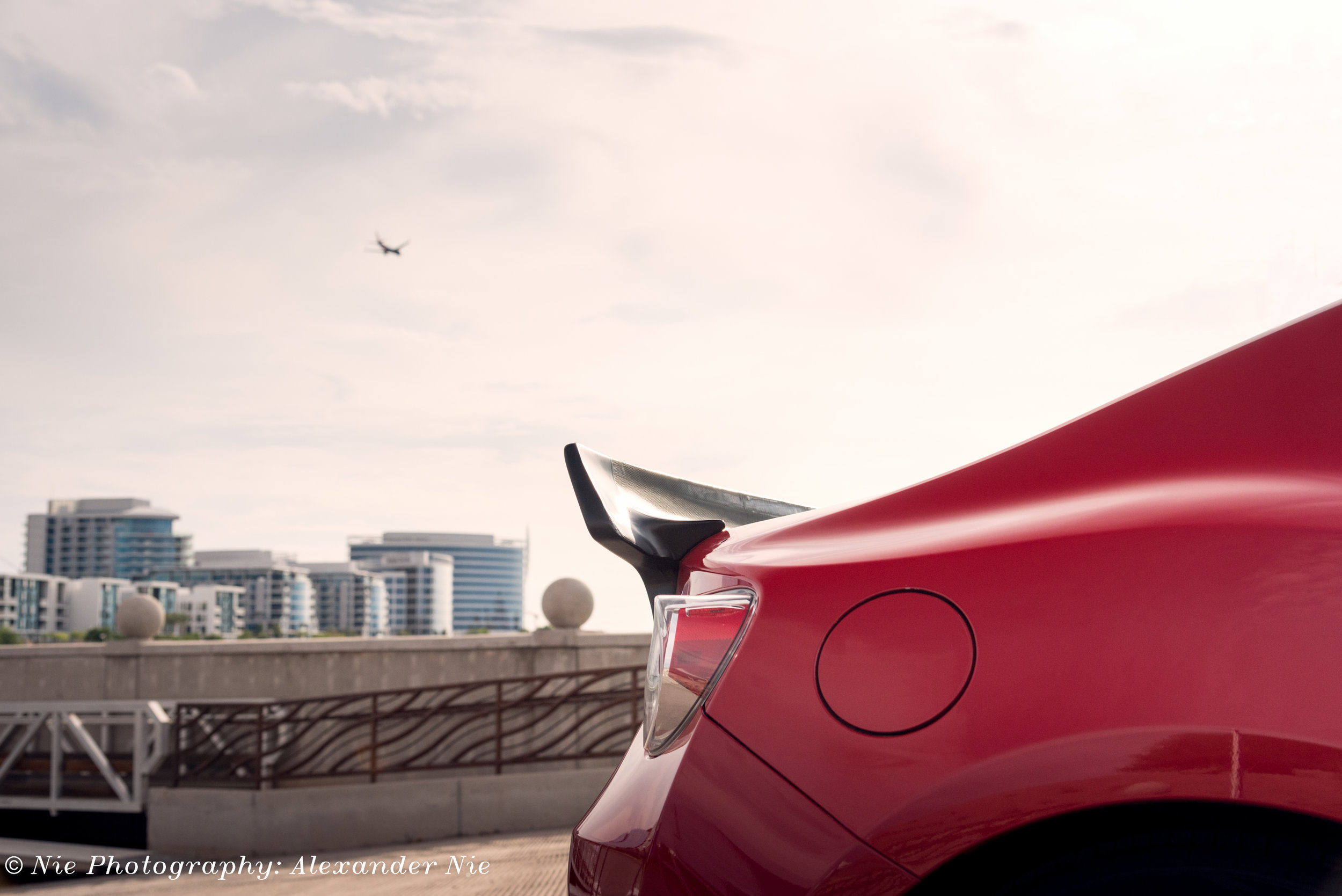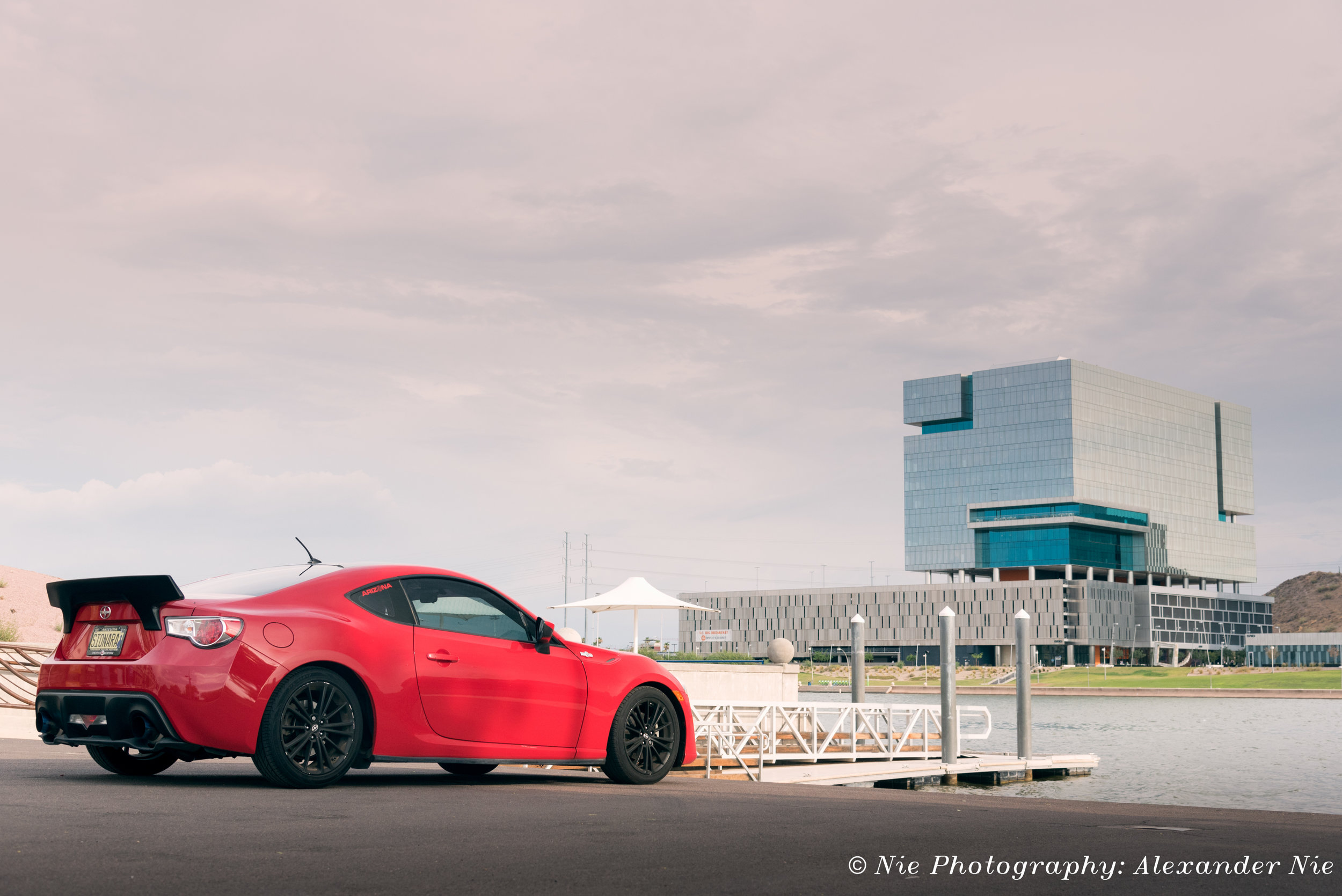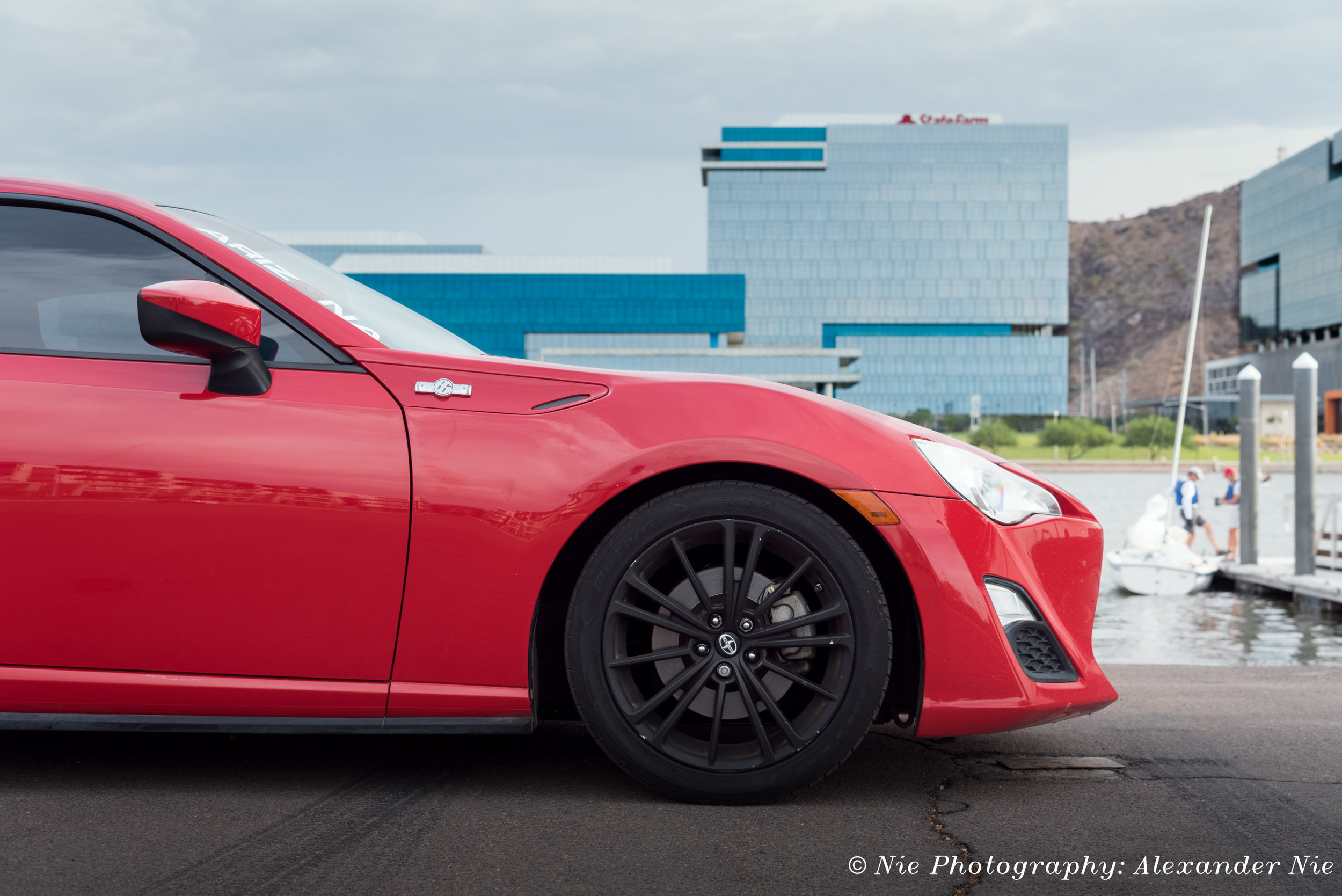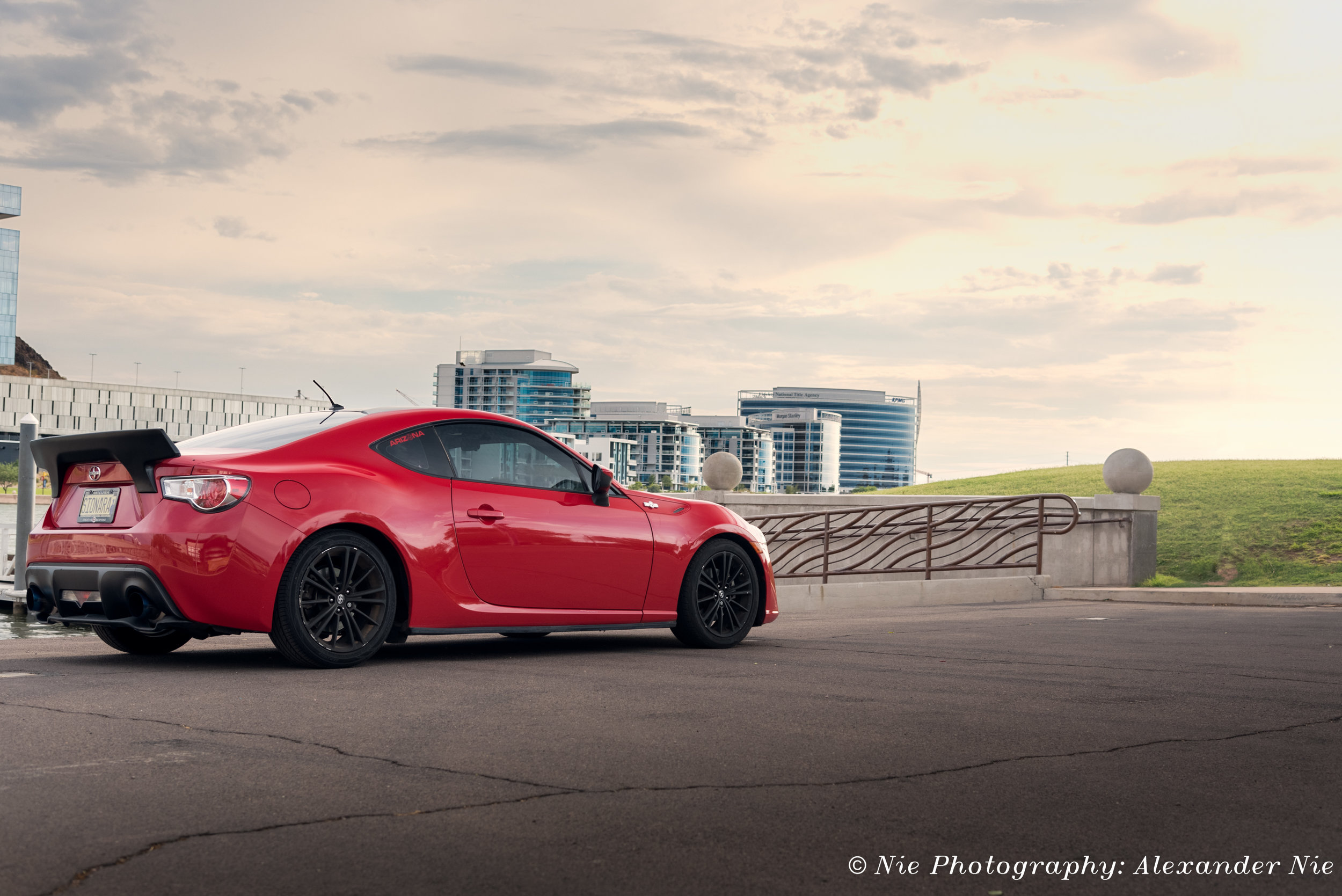The forecast called for rain on Day 3 of comp, and the skies showed it. Because of this, and also because we had the time, we wanted to run the acceleration and skidpad tests first thing in the morning. This way, if it began pouring later, or if we wanted time to improve the car, or God forbid something on the car broke, we would both have a time down for points and have the rest of the morning to do whatever we needed.
The acceleration test is a straightforward, floor it until you reach a certain distance test, with the best time out of a maximum of two attempts with two runs each being recorded. The skidpad test is a little more complex. A tight, figure-eight loop made of cones is set up. The driver accelerates and then circles around one loop twice, with the first lap around being a lap to get acquainted with the loop, and the second loop counting for time. Then the driver repeats this but with the second loop in the figure-eight. The combined times of the loops are then used for scoring,
Our first acceleration test run could've gone better. We knew we had the power and grip, but our launch was killing us. Nevertheless we got our two runs in and then moved onto the skidpad, where again we scored a decent time. However, we were running into a battery issue so the car couldn't start due to a lack of charge. We also learned that the announcers would mistaken us for Texas A&M because they also have a maroon car, leading to the idea that we should put "Not Texas" on our car next year.
The clouds had began to open up and let a drizzle come down. Meanwhile, literally all of our shades were broken by the strong winds. We hastily took off the front wing to cram the car back in the trailer to see what was wrong, and it was traced to be a short. It was good that we ran first thing in the morning because despite the speedy repair, we were almost at the end of the dynamic event sessions. We rushed over to the track and managed to get another acceleration run in, where we improved our time greatly, but we were still suffering badly on launch. But, with the events closed, that was all we could do. We headed back to the puts for a family lunch of tacos to take a much needed break.
The rain had stopped and the sun came back out, perfect for running some practice sessions on the test track to dial in the car before the autocross event. We could have really used this extra track time to set the car up, because after a little more engine tuning and practice launching, we no longer had the problems that plagued us when starting in the acceleration event. The car was also starting to come to its own as well, with seemingly all major issues, other than the starter on the engine, being resolved.
Autocross is also straightforward: run an autocross track as fast as you can, again with two attempts with to tries per attempt. Similar to Formula One, in order to count as "finishing" the event, your time must be within a certain percentage of the top time. I forgot the exact amount, but I think it's within 110%-115% of the top time. On our first attempt, we were concerned about our time we set, but on the second attempt, while it wasn't any record shattering time, we still set a very respectable, and more importantly, safe, lap time. In addition, we got the gem of an announcement stating we were the "University of Arizona State University", which lead to ideas of putting that on the car next year as well.
With the autocross event over, we got to ensuring the car was still fine, because the next day was the endurance event.

